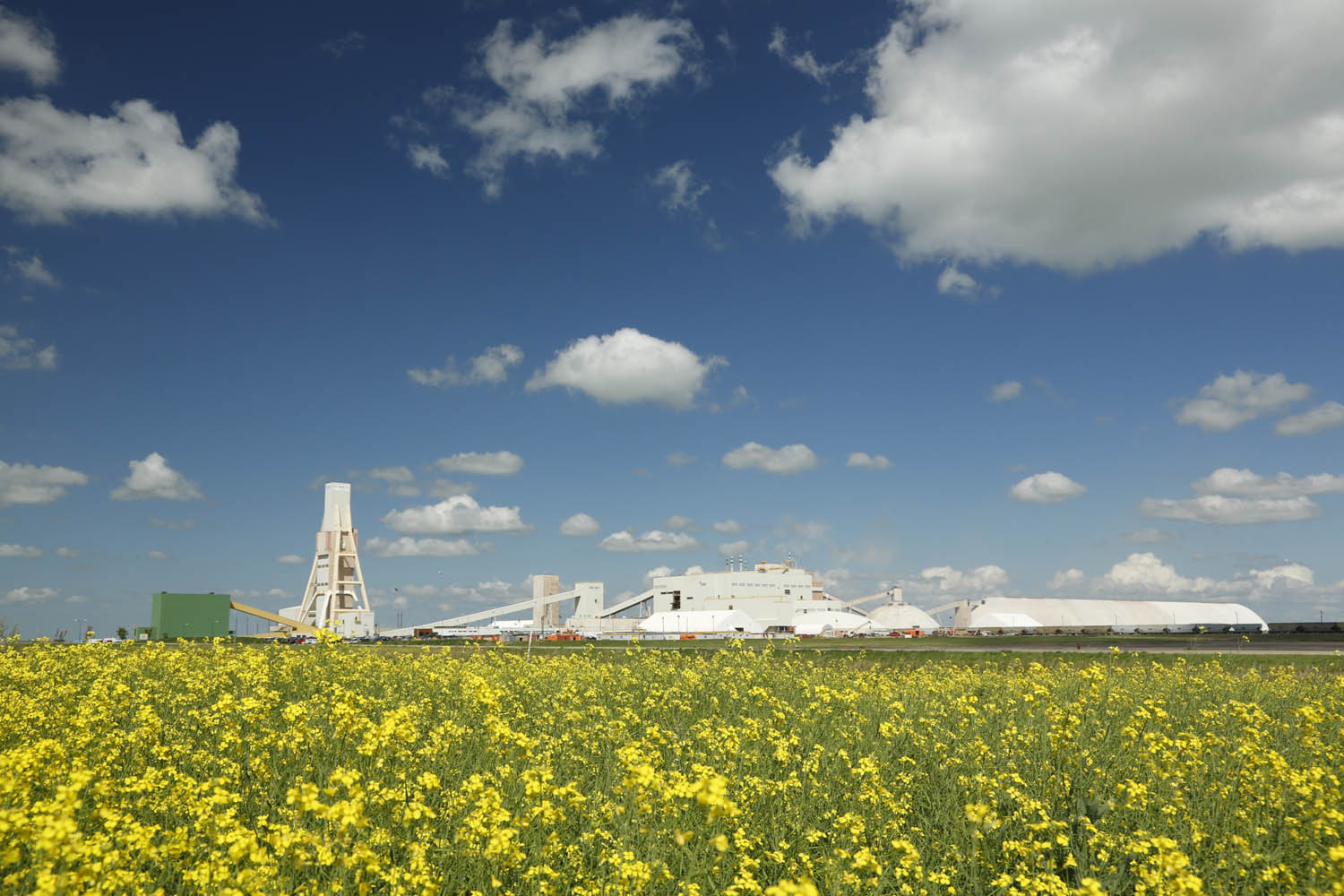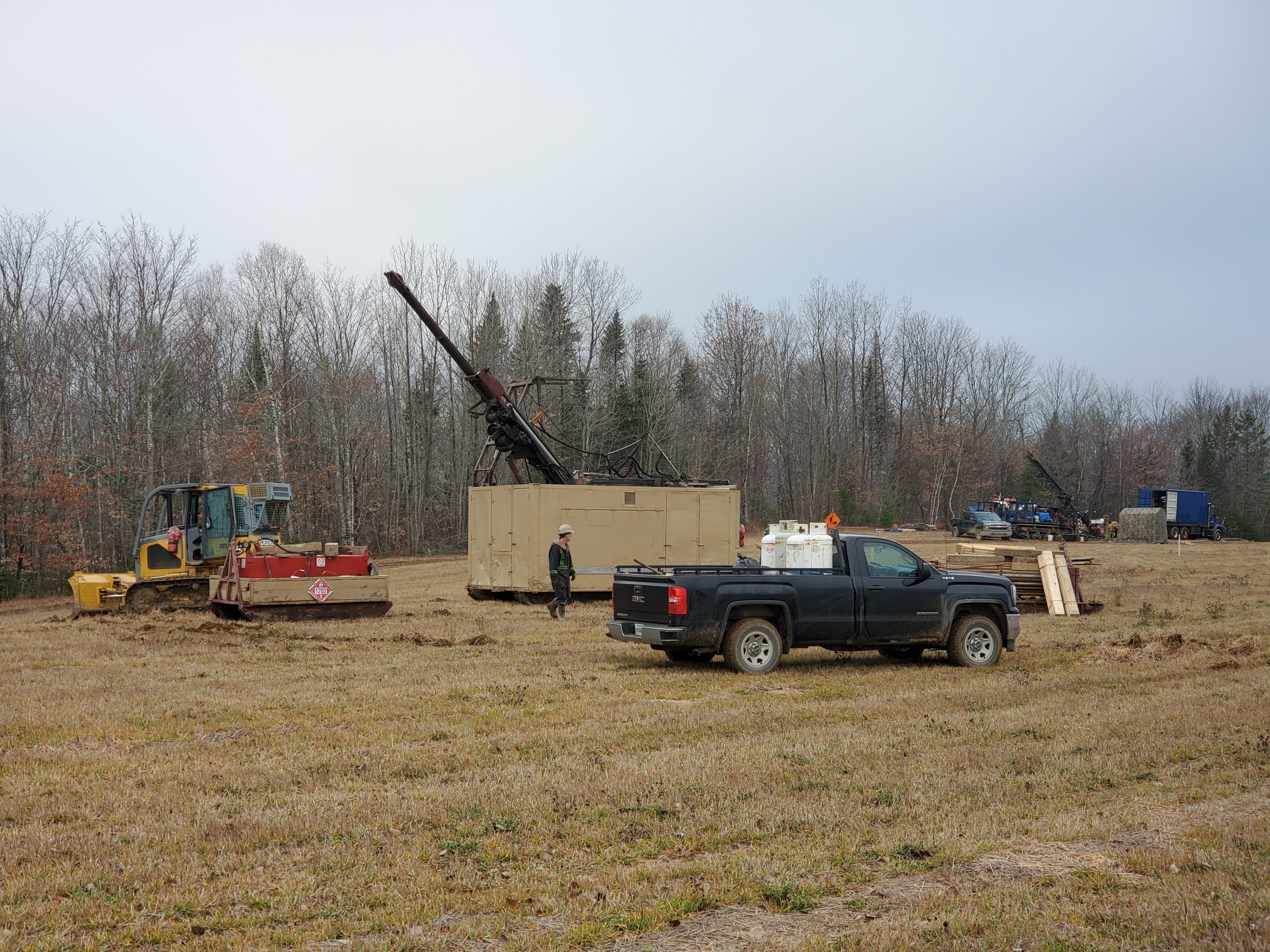A snapshot of mining R&D activity in Ontario
As part of its “Innovation Agenda” the federal government announced last year that it would invest $800 million over four years to support research and innovation in five key sectors of Canada’s economy.
The identity of those sectors is still uncertain, but with the funding expected to flow starting this year, we’ll soon find out if mining is one of them.
What is certain is that Canada’s mining sector could use more investment: We only spend about $550 million annually on mining R&D and innovation compared with $2.8 billion in Australia.
“Unless we have the proper level of investment in research and innovation we’re going to start losing our leadership role in the world in mining,” says Vic Pakalnis, associate vice-president of Laurentian Mining Innovation and Technology (LMIT) organization in Sudbury, Ont.
“Whenever there’s a down cycle, it’s tough to get money invested from the industry and that’s where government has to look at its policies and also do some investing.” With the potential of new investment to come, CMJ decided to look at the mining R&D and innovation that’s happening in Ontario, the focus of our Feb/Mar issue.
Here’s a look at just some of the activity and organizations doing the work.
Camiro
The Canadian Mining Industry Research Organization (Camiro) was established in the mid-1980s with a focus on safety following rockburst incidents in Sudbury-area mines. The collaborative research organization ran the Deep Mining Research Consortium (DMRC) for nine years until the program wrapped up last year.
One DMRC project conducted with the University of Ottawa examined the physiological effects of heat stress in deep mining environments on the human body. A practical guide to identifying and mitigating the symptoms of heat stress was produced as a result. Another project investigated the use of an acrylic-based plastic spray-on liner that could be used in ground support applications instead of screening and shotcrete.
Camiro’s Diesel Emissions Research Initiative (DERR), which is at the end of its second phase after six years, looked at the effectiveness of technologies such as diesel particulate filters in reducing emissions into underground mines. DERR’s work showed the filters, which can be retroactively fitted onto large diesel mining equipment or smaller utility vehicles, could capture well over 95% of diesel particulates and harmful substances. Camiro is looking for funding to extend the program to assess the effectiveness and safety of fourth generation diesel engines, which were designed for surface use in the transport truck industry, in underground mining applications.
Laurentian Mining Innovation and Technology (LMIT)
The Laurentian Mining Innovation and Technology umbrella organization is composed of four centres at Laurentian University: the Mining Innovation, Rehabilitation and Applied Research Corp. (Mirarco), Mineral Exploration Research Centre (MERC), the Vale Living with Lakes Centre, and the Centre for Research in Occupational Safety and Health (CROSH).

Laurentian University received $49 million in federal funding for its Metal Earth project last year.
While Mirarco is a not-for-profit, incorporated research organization founded in 1998 whose focus is applied research to manage risks in the mining sector, the other centres are academic units of Laurentian.
One recent Mirarco project is a “Baby” hydraulic air compressor (HAC), currently at the laboratory pilot scale, that could eventually offer an energy efficient way to cool deep mines. Another project, the Offshore Passive Photo-Voltaic (OPPV) solar power project, is being tested in the waters of the Mediterranean near Malta. Used in tailings ponds, the solar panels could provide a barrier between wildlife and the tailings while generating electricity for the mine.
In September, MERC received $49 million from the federal government’s Canada First Research Excellence Fund (CFREF) for its seven-year, $104-million Metal Earth project. Metal Earth, which is aimed at lowering the risk of mineral exploration and increasing discovery rates, will receive the rest of its funding in cash and in kind from 22 partners in academia, industry and government.
Led by MERC director Harold Gibson, the project will aim to transform the understanding of how base and precious metals were formed during the Precambrian era. It will go beyond creating models of deposits or districts and instead look at systems, searching for geological, geochemical and geophysical differences between deposit rich areas and barren areas that appear geologically equivalent.
Laurentian’s Vale Living with Lakes Centre has created a new industrial research chair position in biomining, bioremediation and science communication after receiving a $630,000 investment from the Northern Ontario Heritage Fund last spring. The five-year position was filled in July by Nadia Mykytczuk.
Mykytczuk’s work will focus on commercializing biomining and bioremediation technologies, for example, using microbes to liberate metals from ore or mine waste, or to eliminate problematic mining waste interest is the development of technologies that can work in colder environments, such as northern Canada.
In 2015, CROSH announced a three-year study on the mental health of miners.
The $400,000 study, funded by Vale, will include a comprehensive survey including workers from all occupational groups at Vale’s operations in Ontario. A multidisciplinary team from CROSH will work closely with a Vale/United Steel Workers joint occupational health committee as the Mining Mental Health project proceeds.
The study will shed light on an area that has so far received little attention and study – mental health in the mining industry and its links to productivity, absenteeism, injury and quality of life.
CEMI

CEMI and Nordic Minesteel Technologies
with the mine development canopy system.
Incorporated in 2007, Canada’s Centre for Excellence in Mining Innovation (CEMI) helps solve mining industry challenges from the R&D to implementation and commercialization from exploration to environmental sustainability.
CEMI and its partners have developed a mine development canopy system focused on increasing advance rates and reducing costs in underground mine development.
The robust, movable canopy protects personnel and equipment in the development heading from rock falls and rockbursts while allowing simultaneous activities in the heading. CEMI has partnered Nordic Minesteel Technology in North Bay, to build and commercialize the canopies. The second phase of the project will involve development of the equipment needed for material handling of the rock away from the face.
Another technology that CEMI has supported through its Innovation & Prosperity Office (IPO) is ColdBlock Technologies’ ColdBlock Digestion. The technology offers an alternative to the conventional methods used in mining assay labs – acid digestion – with benefits in safety, turnaround times, cost and productivity, since it can be automated. ColdBlock has gone through research, demonstration and operational scale implementation phases, and is now being commercialized.
The $35-million business-led NCE, Ultra Deep Mining Network (UDMN), managed by CEMI, funded by the federal government and mining industry, addresses challenges i7n ultra-deep mining conditions below 2.5 km. With 76 members, 25 projects with commercial viability in rock stress risk reduction, energy reduction, productivity, and improved human health.
Recently, UDMN recognized its members for their innovative work: Jannatec Technologies is working on a new helmet and communications system for underground miners so they can be alerted to major pieces of equipment that are nearby; Maestro has developed and commercialized a digital gas sensor that is easier to calibrate and more reliable in underground readings; and Mira Geoscience’s 4-D multi-disciplinary data management system monitors and assesses the risks of geotechnical changes taking place underground, such as rock-bursting and seismicity.
Norcat
Founded in 1995 in Sudbury, the Northern Centre for Advanced Technology (Norcat) is a private, non-profit organization that provides training and development programs and facilities, and also facilitates innovation and commercialization activities of small and medium size enterprises in northern Ontario.
Several companies in the mining services space are developing interesting products with Norcat’s support.
In September, Boart Longyear established a Northern Ontario Technology Development Site at Norcat to develop and test surface and underground diamond drilling technology. The site was funded by a $1.37-million grant from the Northern Ontario Heritage Fund Corporation (NOHFC) and a matching corporate capital investment.
At the site, the company has begun to test and develop proprietary technologies designed to increase drilling productivity, improve safety, increase efficiency and reduce drilling costs. Some of the testing will include next-generation Roller Latch and drilling rod technologies, as well as Boart Longyear’s TruCore core orientation system and TruShot magnetic survey tool.
For the long term, there is a growing need for technologies that will help reduce the costs of mineral exploration and production related drilling and decrease the time it takes to define, sample, validate and mine mineral resources, and Boart Longyear is committed to developing new mineral exploration and production technologies to meet those needs.
Boart Longyear has also operated the Pyrite Road Technology Development Site in Adelaide, South Australia, since 2015.
Sudbury-based start-up Minalytix offers core-logging software that simplifies the collection, management and sharing of drill data. The company’s MX Deposit software is a cloud-based, software-as-a-service (Saas) product, which means users pay on a monthly or annual subscription basis. With no initial software purchase, no on-premise IT requirement, and no need to maintain servers, install software, or check-out licenses, all that is required to access the system is an internet connection.
The MX Deposit Android app – the first of its kind in the mining and exploration industry – is a supporting module to the web platform. This “true” mobile app is a native Android application, and allows for more efficient data collection in the field.
Users can browse drill holes in their project and assign holes to themselves for offline data capture. The Android tablet can then be taken into the field or core shack where the user can enter drill hole and sampling data, which is automatically synchronized to the web when they get back to the office with an internet connection.
The flexible software can be used for exploration or grade control by junior exploration companies or major mining companies and can be quickly configured to meet each project’s unique requirements using an intuitive set of administrative screens.
Minalytix recently announced a partnership with Geosoft to release MX Deposit commercially.
Dowling, Ont.-based Hard-Line has tested its Teleop and Teleop Auto teleremote operating systems at Norcat’s test mine. Teleop allows the control of heavy machinery from a distant and safe location.
It does not require operator line of sight and can be used on any type, make, model, or year of machine. The technology allows for continued operation during shift changes and after blast cycles.
Teleop Auto, an upgrade to the Teleop system, allows the teleoperation of one machine from one chair, with autonomous driving features. Teleop Auto will automatically drive the machine through a predetermined path. Once the operator has acquired a full load, they can use the automatic steer, speed, and braking functions to send the machine to dump at a specified location. In September, Hard- Line officially launched Teleop Auto at MINExpo in Las Vegas, demonstrating the technology by operating a load-haul-dump machine located at Norcat’s test mine near Sudbury from the trade show floor.
Hard-Line’s most recent upgrade, Teleop Multi, allows the teleoperation of multiple machines from multiple operator’s stations, one at a time. The operator can select from a pool of machines that have been placed on their operator station.
When operating one of these machines all other machines connected to the chair will shut down.
Queen’s University
The Mining Systems Laboratory at Queen’s University is a multi-disciplinary research group that focuses on field robotics and, in particular, on mobile robotics and related applications in mining. This year Dr. Joshua Marshall, director of the MSL, and three other graduate student researchers from Queen’s are working on-site in Örebro, Sweden, with engineers from Atlas Copco Rock Drills AB and with Örebro University’s Centre for Applied Autonomous Sensor Systems (AASS). Their collaboration involves researching new and advanced algorithms for extremely fast autonomous underground tramming, as well as on the development of admittance-based control schemes for autonomous loading of LHD machines.
University of Toronto
At the University of Toronto’s Lassonde Institute of Mining, one area of research is on understanding the ice-content, heat-transfer and fracturing of frozen and thawing rock masses in high-latitude underground mines.
In cases where a mineshaft must penetrate permafrost, heat generated from ore-extraction and equipment begins to melt the permafrost in the area isolated around the shaft. While frozen rock is considered stable, it must be stabilized as it thaws. Prof.
John Harrison and PhD candidate Greg Gambino are taking a qualitative approach to understanding the thermodynamic and mechanical implications of thawing rock masses, with the goal of better predicting instabilities and implementing reinforcements in the rock face in an economical and timely way.
Current research focuses on site-specific scenarios, but Harrison and Gambino have uncovered other possible uses for the research, most related to the impact of climate change on surface mines and hydrogeology.
In partnership with the University of Toronto Institute for Aerospace Studies, Prof. Kamran Esmaeili and MASc Candidate Thomas Bamford are optimizing mining processes with the use of drones, acquiring real-time, high-quality data.
Current data-collection practices are time consuming and can expose personnel to hazards. Drones allow for rapid, accurate data collection over large areas, frequently including real-time post-blast rock fragmentation analysis, inspection of excavations and earth works and hyperspectral mapping, etc. Using this information, researchers are able to develop strategies and systems that continuously reconcile mining models with real-time data, allowing for greater insights, reduced uncertainties and for engineers to target areas of concern.
Drones are now being used in the mining sector for aerial surveying and volume calculations. Esmaeili and Bamford’s research will bring novel applications to the field.





Comments